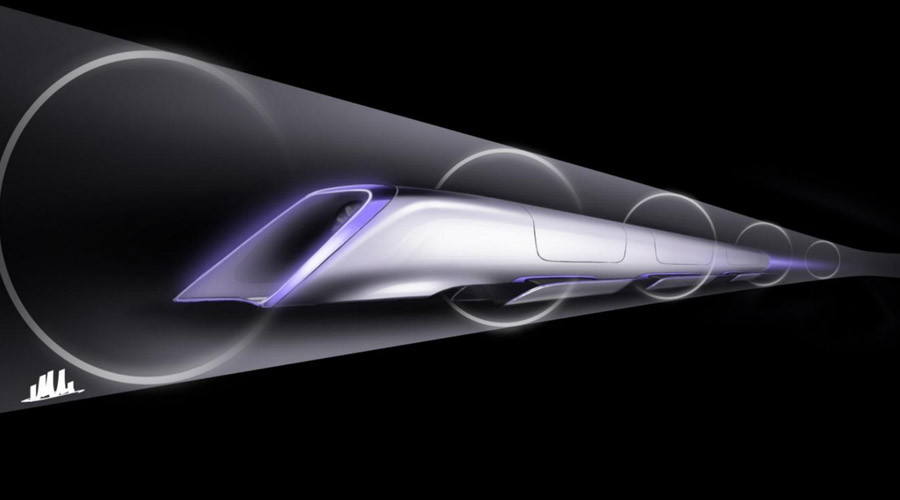The Hyperloop is a conceptual high-speed transportation system put forward by entrepreneur Elon Musk, incorporating reduced-pressure tubes in which pressurized capsules ride on an air cushion driven by linear induction motors and air compressors. As of 2015, designs for test tracks and capsules are being developed, with construction of a full-scale prototype scheduled to start in 2016.
His presentation of the Hyperloop concept, which came along with futuristic renderings of sleek aluminum passenger pods, would travel in an enclosed environment shielded by steel tubes, mounted on pylons 50 to 100 yards apart, at speeds surpassing that of commercial jet liners. That means that the capsules would be moving faster than 500 mph. A trip from San Francisco to Los Angeles would take you about 30 minutes.

Massachusetts Institute of Technology, based in Cambridge, Massachusetts, was named the winner Saturday after a competition among more than 1,000 college students at Texas A&M University in College Station.

That one-mile-long test track will be built for the competition by SpaceX near its headquarters outside Los Angeles. No humans will travel through the tube. The company plans to offer competition winners a prize, but it hasn’t yet said what that will be. “While we are not developing a commercial Hyperloop ourselves, we are interested in helping to accelerate development of a functional Hyperloop prototype,” SpaceX said in a statement.

The company also poses some “representative questions” which it hopes teams will answer in the design contest—questions that make it clear just how much work still needs to be done hammering out the Hyperloop idea. They include: “What safety mechanisms are in place to mitigate a complete loss of pod power?” and “What safety mechanisms are in necessary to mitigate a tube breach?” and “How should ground operators communicate with the pod, especially in the case of an emergency?”
Public opening of the five-mile test track in Quay Valley, California is slated for 2018.
Now, Hyperloop Transportation Technologies (HTT) wants to prove they can shoulder the load that comes with creating something straight out of science fiction, and made the announcement on Thursday. The company will partner up with engineering-design firm AECOM, as well as the Swiss company Oerlikon, which specializes in vacuums – a technology that is key to the idea.
